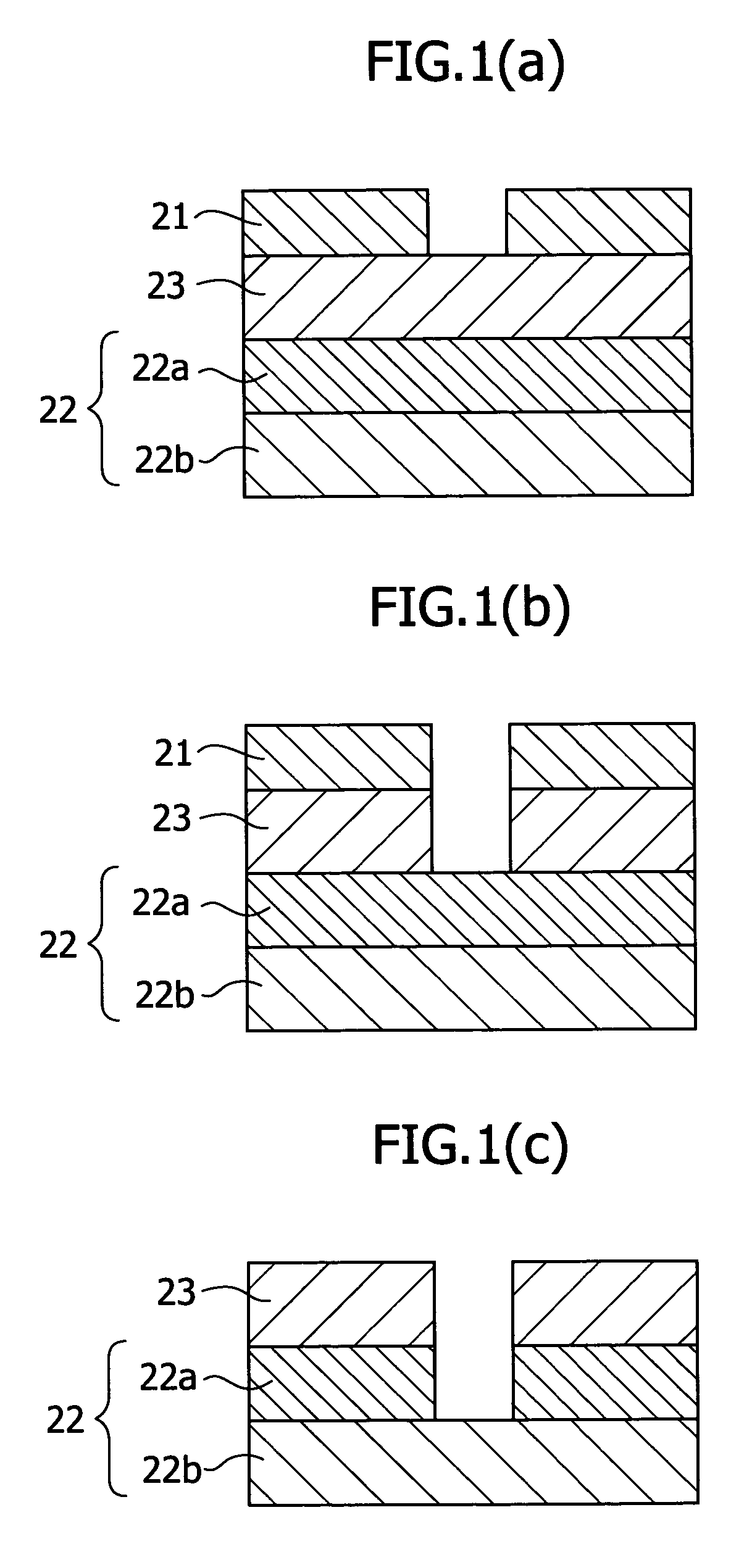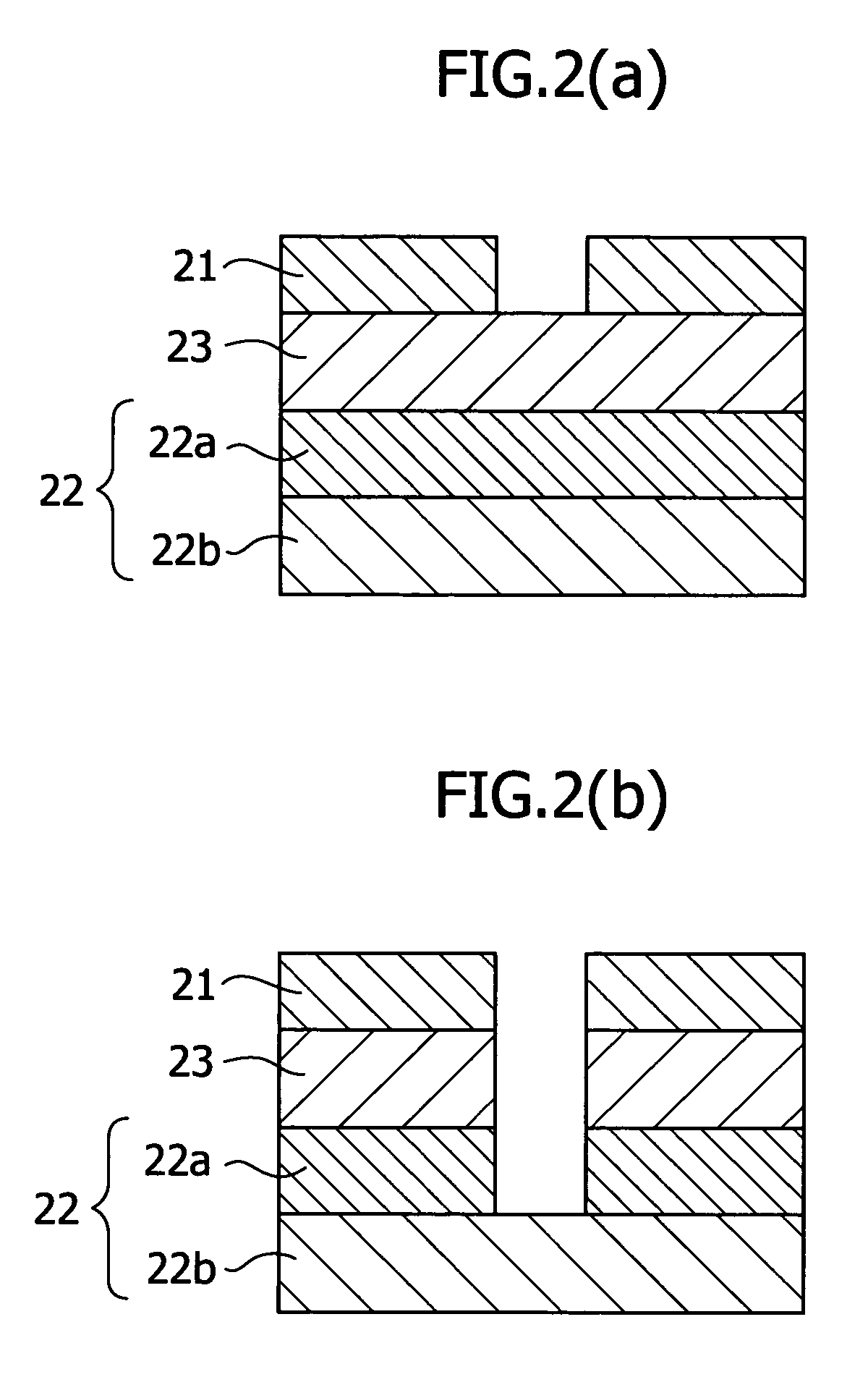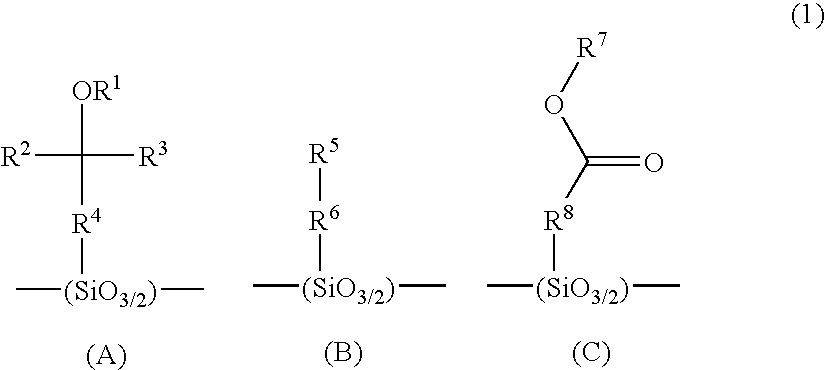Positive resist material and pattern formation method using the same
a technology of resist pattern and material, applied in the direction of photosensitive materials, auxillary/base layers of photosensitive materials, instruments, etc., can solve the problems of low glass transition temperature (tg) owing to low molecular weight, reducing the resolution and widening of a difference (proximity bias) of the resist pattern, and inconvenience in practical use, etc., to achieve good pattern shape, good pattern shape, and good pattern shape
- Summary
- Abstract
- Description
- Claims
- Application Information
AI Technical Summary
Benefits of technology
Problems solved by technology
Method used
Image
Examples
synthesis example 1
[0215]In 150 g of tetrahydrofuran and 30 g of pure water were dissolved 19.0 g of 2-carbo-t-butoxy-5(6)-trimethoxysilylnorbornane, 45.3 g of 2-carbomethoxy-5(6)-trimethoxysilylnorbornane and 29.7 g of 2-(2,2-bistrifluoromethyl-2-hydroxyethyl)-5(6)-trimethoxysilylnorbornane. After the temperature of the resulting solution was elevated to 35° C., 0.7 g of oxalic acid was added dropwise. The reaction mixture was stirred for 10 hours, whereby a siloxane hydrolysate was obtained. The resulting hydrolysate had a weight-average molecular weight of 1100. After neutralization with aqueous ammonia, washing with water was repeated, whereby a neutral hydrolysate solution was obtained. Under reduced pressure, tetrahydrofuran and dissolved water were removed to yield 73 g of the hydrolysate as a solid. The resulting solid is designated as Hydrolysate-1.
synthesis example 2
[0216]Hydrolysate-1 was dissolved in 40 g of dimethylformamide. To the resulting solution was added 5 g of potassium hydroxide, followed by heating at 140° C. for 16 hours. The reaction mixture was dissolved in 1000 ml of ethyl acetate. The resulting solution was neutralized with acetic acid and then washing with 500 ml of pure water was repeated, whereby a neutral condensate solution was obtained. From the resulting solution, ethyl acetate and dissolved water were removed under reduced pressure to yield 70 g of the condensate as a solid. The condensate had a weight-average molecular weight of 2700 and Tg of 110° C. It was confirmed that a T1 / T2 / T3 ratio of this condensate as measured by 29SiNMR was 0 / 8 / 92 and a ratio of T3 reached at least 90% of the whole condensate. The resulting solid is designated as Condensate-1.
synthesis example 3
[0217]Hydrolysate-1 was dissolved in 40 g of dimethylformamide. To the resulting solution was added 1.7 g of potassium hydroxide, followed by heating at 140° C. for 16 hours. The reaction mixture was dissolved in 1000 ml of ethyl acetate. The resulting solution was neutralized with acetic acid and then washing with 500 ml of pure water was repeated, whereby a neutral condensate solution was obtained. From the resulting solution, ethyl acetate and dissolved water were removed under reduced pressure to yield 70 g of the condensate as a solid. The condensate had a weight-average molecular weight of 2750 and Tg of 105° C. It was confirmed that a T1 / T2 / T3 ratio of this condensate as measured by 29SiNMR was 0 / 12 / 88 and a ratio of T3 reached about 90% of the whole condensate. The resulting solid is designated as Condensate-2.
PUM
| Property | Measurement | Unit |
|---|---|---|
| Temperature | aaaaa | aaaaa |
| Temperature | aaaaa | aaaaa |
| Temperature | aaaaa | aaaaa |
Abstract
Description
Claims
Application Information
 Login to View More
Login to View More - R&D
- Intellectual Property
- Life Sciences
- Materials
- Tech Scout
- Unparalleled Data Quality
- Higher Quality Content
- 60% Fewer Hallucinations
Browse by: Latest US Patents, China's latest patents, Technical Efficacy Thesaurus, Application Domain, Technology Topic, Popular Technical Reports.
© 2025 PatSnap. All rights reserved.Legal|Privacy policy|Modern Slavery Act Transparency Statement|Sitemap|About US| Contact US: help@patsnap.com



